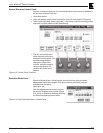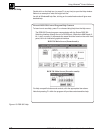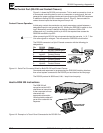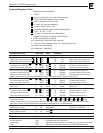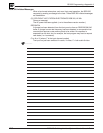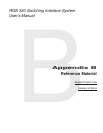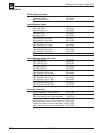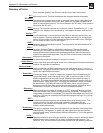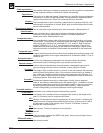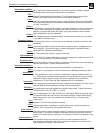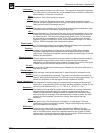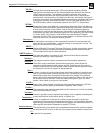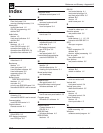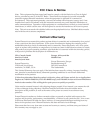
Reference and Glossary • Appendix B
RGB 320 Switching Interface System • User’s Manual • Extron
Cable equalization –
The method of altering the frequency response of a video amplifier to compensate
for high frequency losses in cables that it feeds. See
peaking.
Capacitance –
The storing of an electrical charge. Capacitance is a condition that exists between
conductors in a cable. At high frequencies, this represents an impedance called
capacitive reactance
(Xc), which can cause signal loss or distortion.
Chroma –
The characteristics of color information, independent of luminance intensity. Hue
and saturation are qualities of chroma. Black, gray and white objects do not have
chroma characteristics.
Chrominance signal –
Part of a television signal containing the color information. Abbreviated as
C.
Coaxial cable –
A two-conductor wire in which one conductor completely wraps the other
conductor, with the two separated by insulation. Constant impedance
transmission cable. Abbreviated as
coax.
Component video –
Our color television system starts with three channels of information; red, green,
& blue (RGB). In the process of translating these channels to a single composite
video signal, they are often first converted to Y, R-Y, and B-Y. Both 3-channel
systems, RGB and Y, R -Y, B -Y, are component video signals. They are the
components that eventually make up the composite video signal. Higher quality
program production is possible if the elements are assembled in the component
domain.
Composite sync –
A signal combining horizontal and vertical sync pulses and equalizing pulses, with
no picture information and no signal reference level. Sometimes called
C,
S
(as in
RGBS
) or
HV.
Composite video –
An all-in-one video signal comprised of the luminance (black and white),
chrominance (color), blanking pulses, sync pulses and color burst.
Contact closure –
A device that provides electrical contact between a designated input pin and
ground, causing a device, such as a switcher, to do a particular function.
Contrast –
The range of light and dark values in a picture, or the ratio between the maximum
and the minimum brightness values. Low contrast is shown mainly as shades of
gray, while high contrast is shown as blacks and whites with very little gray. It is
also a TV monitor adjustment that increases or decreases the level of contrast of
a displayed picture. Also called
white level.
Crosstalk –
Interference between two audio or video signals, usually from an adjacent
channel, that adds an undesired signal to the desired signal. Crosstalk is caused
by magnetic/capacitative coupling or electrostatic induction, and can occur when
there are grounding problems or improper cable shielding. Video symptoms
include noise/ghosting, and audio symptoms include signal leakage.
Crosstalk isolation –
Attenuation of an undesired signal introduced by crosstalk.
D connector –
A connector with rounded corners and angled ends, taking on the shape of the
letter
D.
Commonly used in computers and video.
dB –
Decibel. The standard unit used to express gain or loss of power. It indicates the
logarithmic ratio of output power divided by input power. A power loss of 3 dB is
an attenuation of half of the original value. The term “3 dB down” is used to
describe the “half power point”.
DC –
Direct current. The flow of electrons in one direction.
Decibel –
See
dB.
Decoder –
A device used to separate the RGBS (red, green, blue and sync) signals from a
composite video signal.
Differential audio –
See
balanced audio.
B-3



